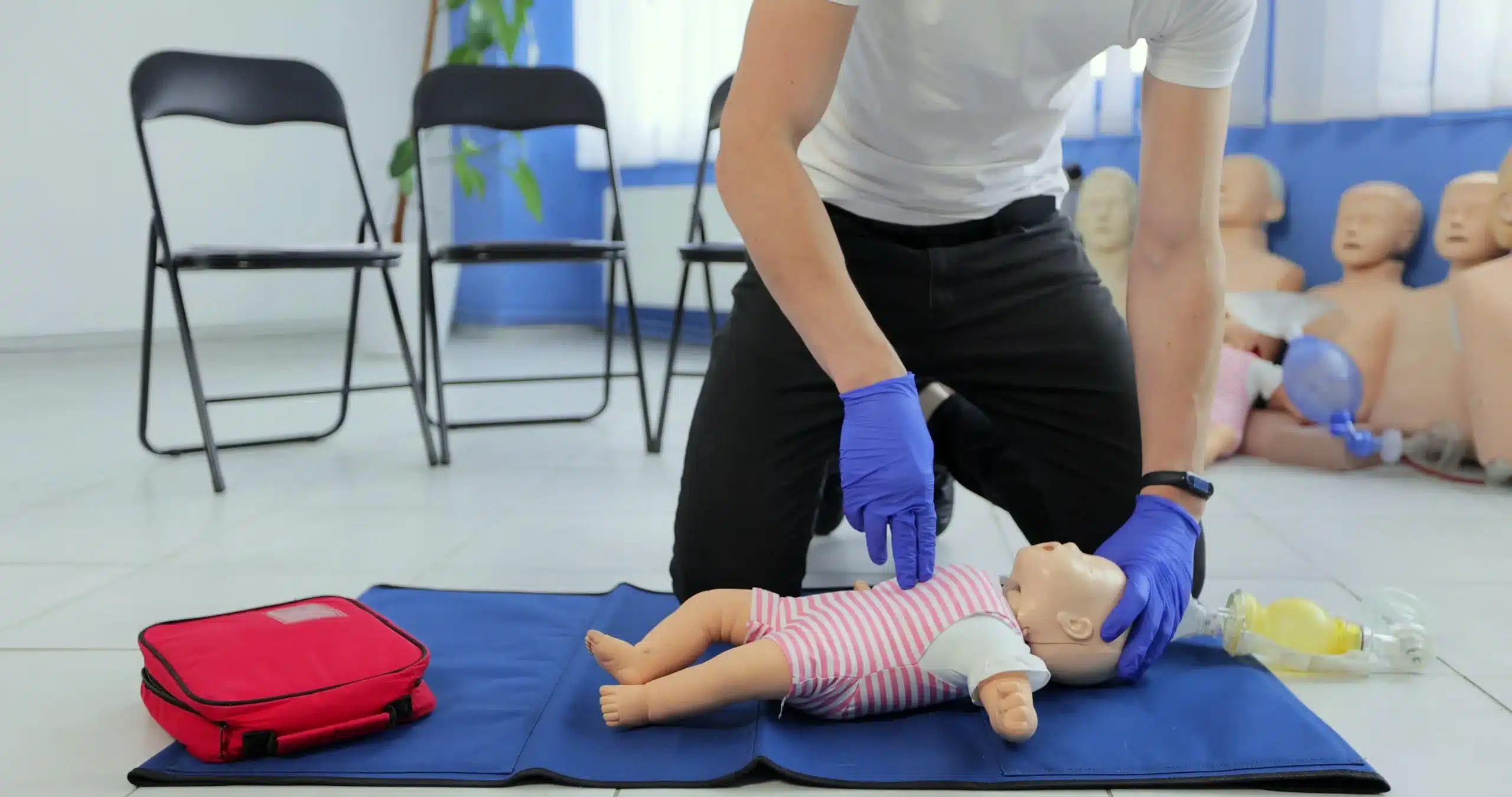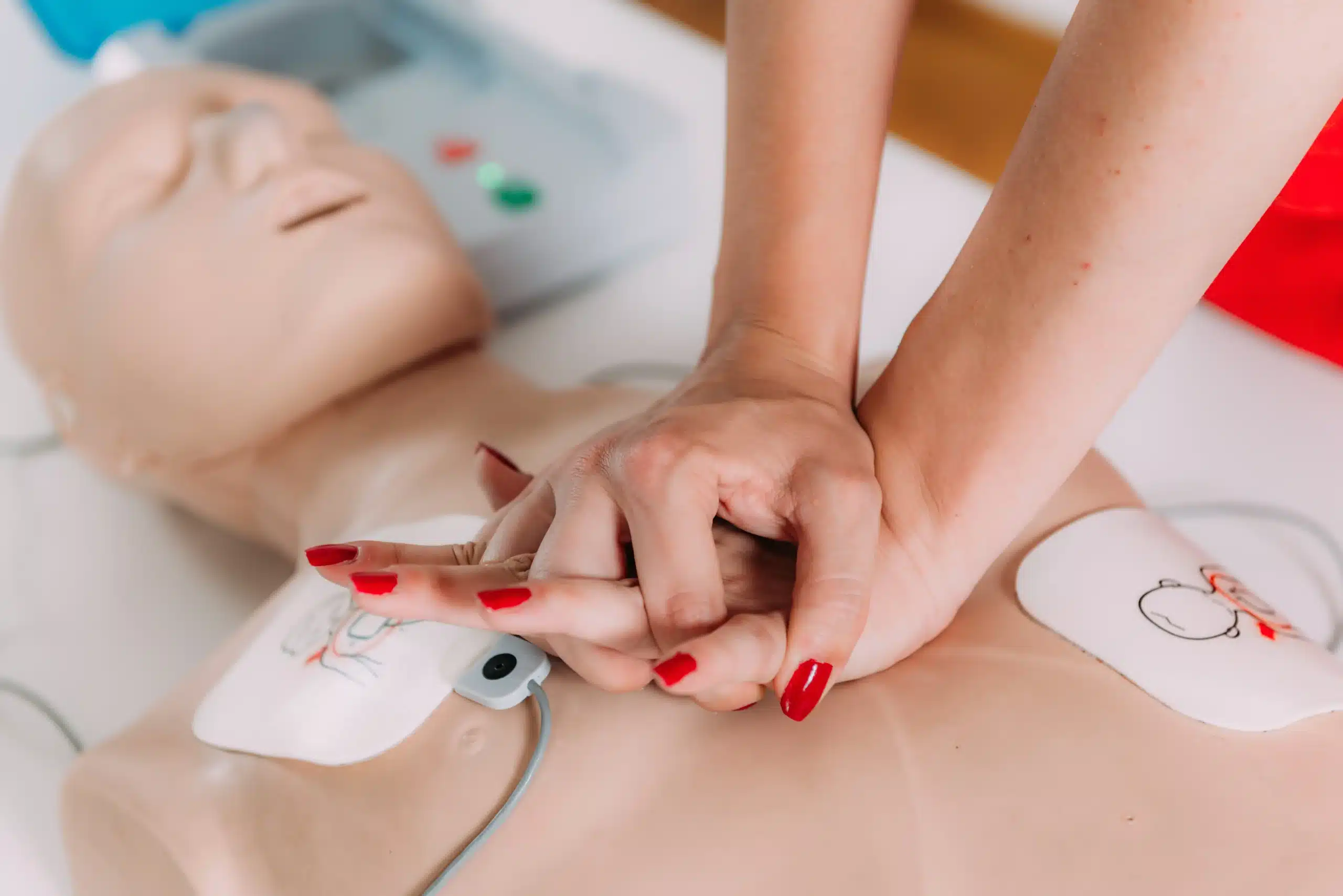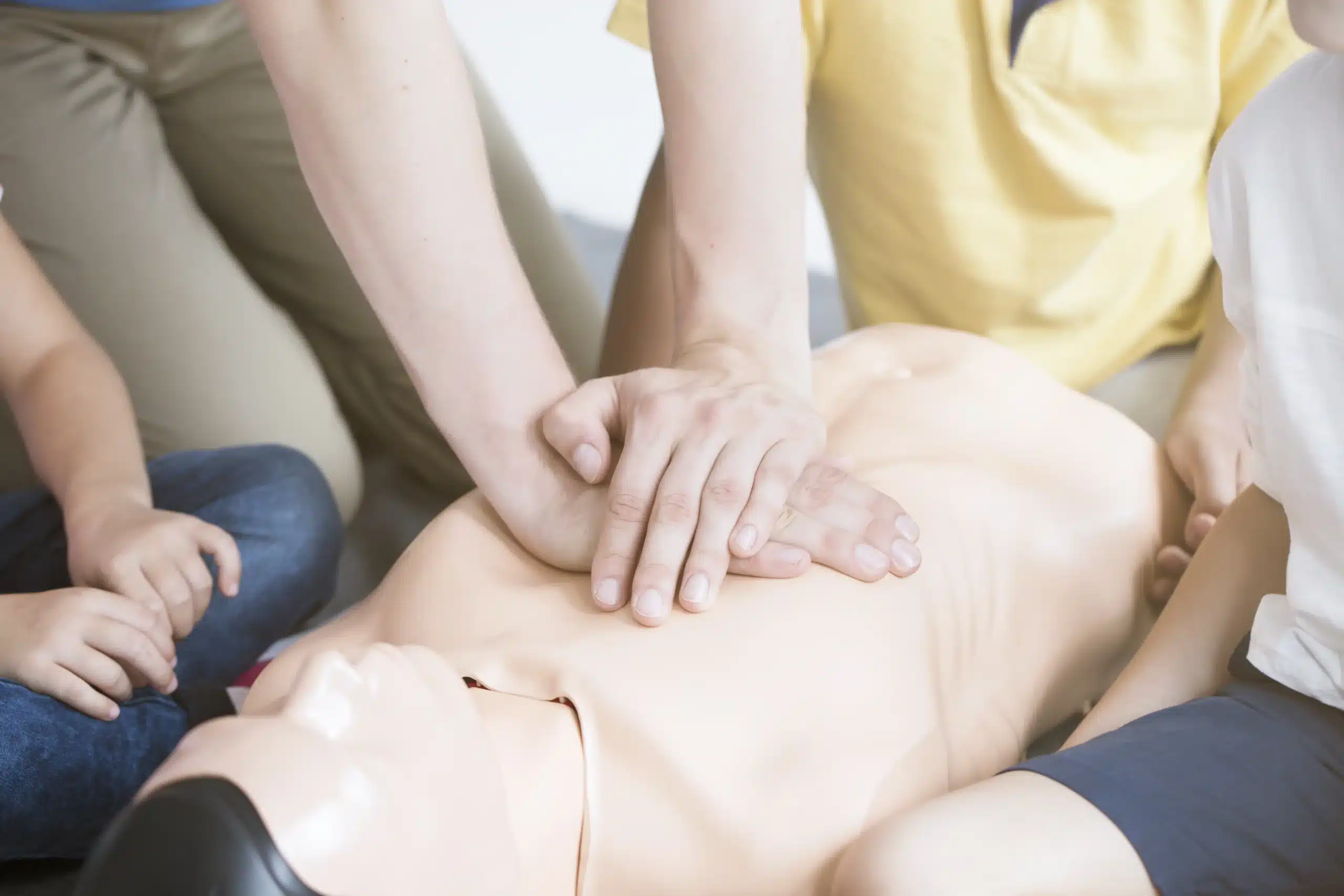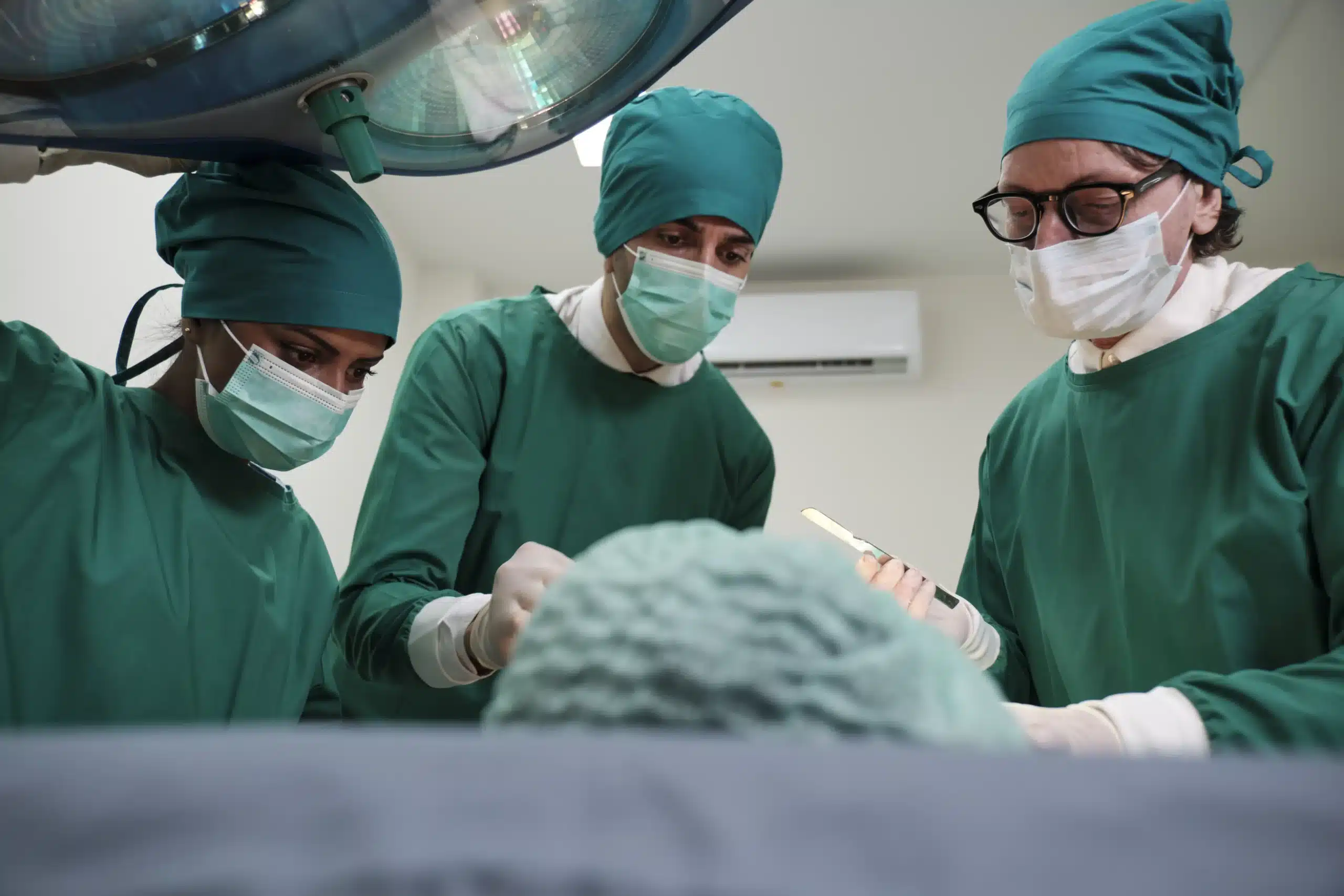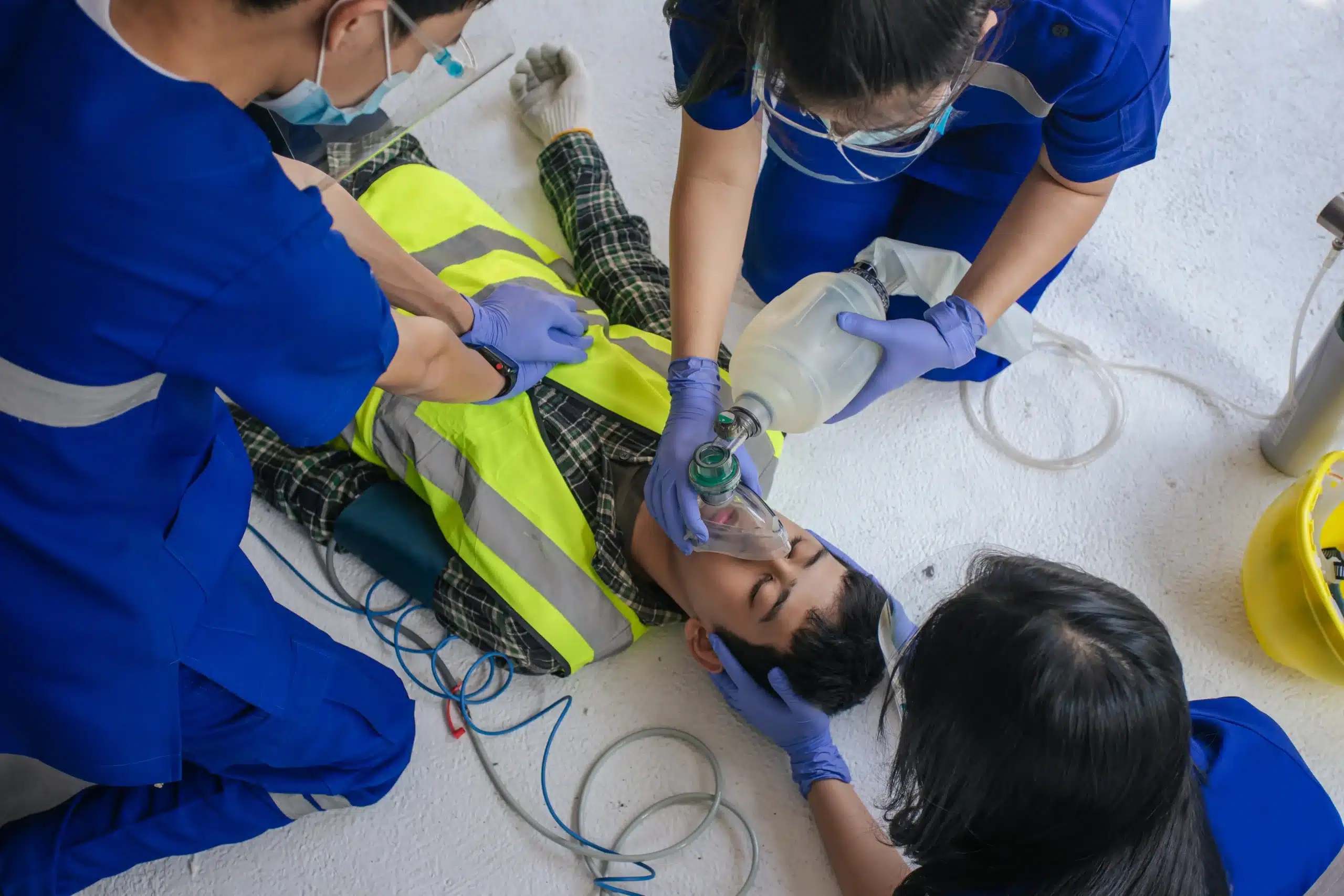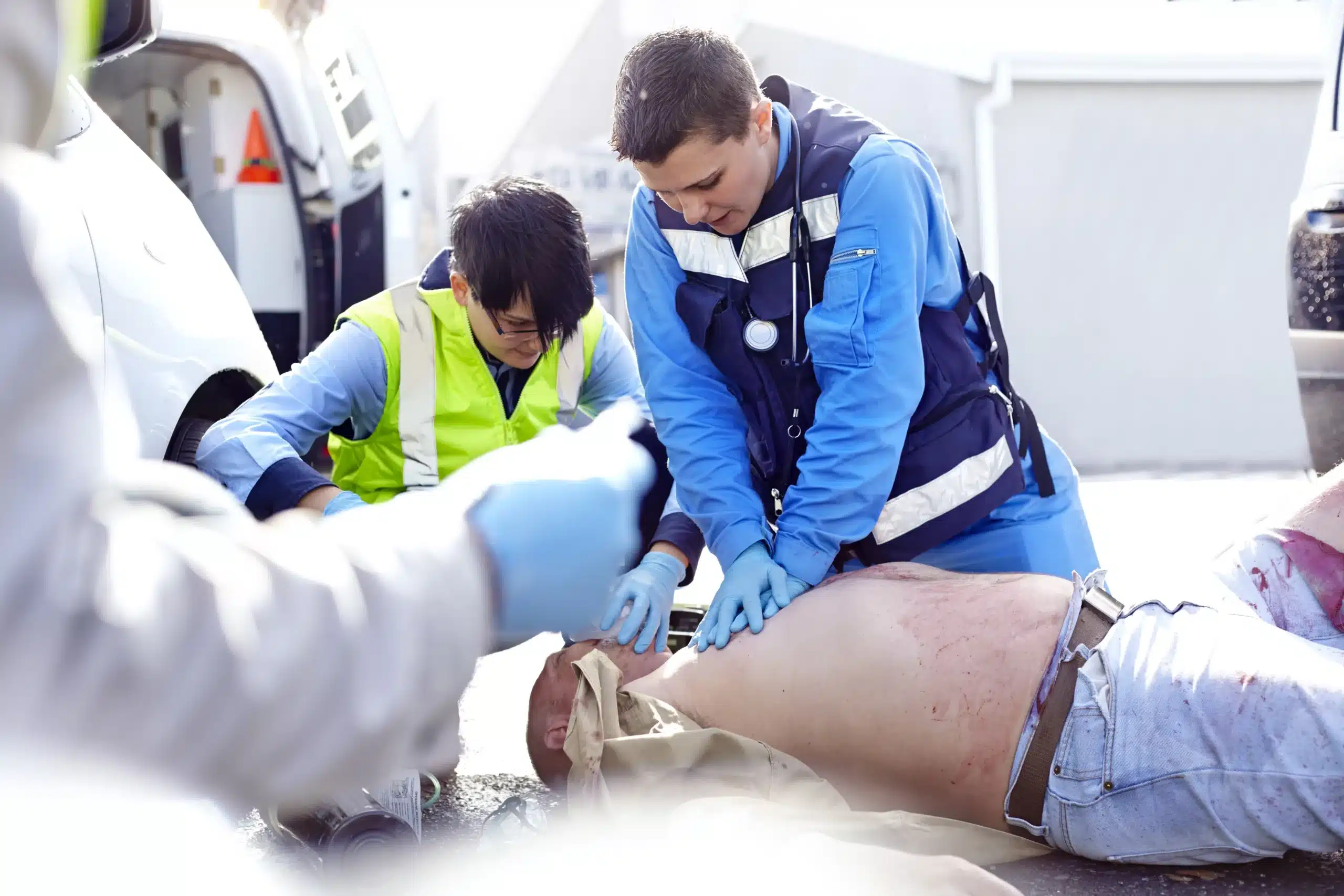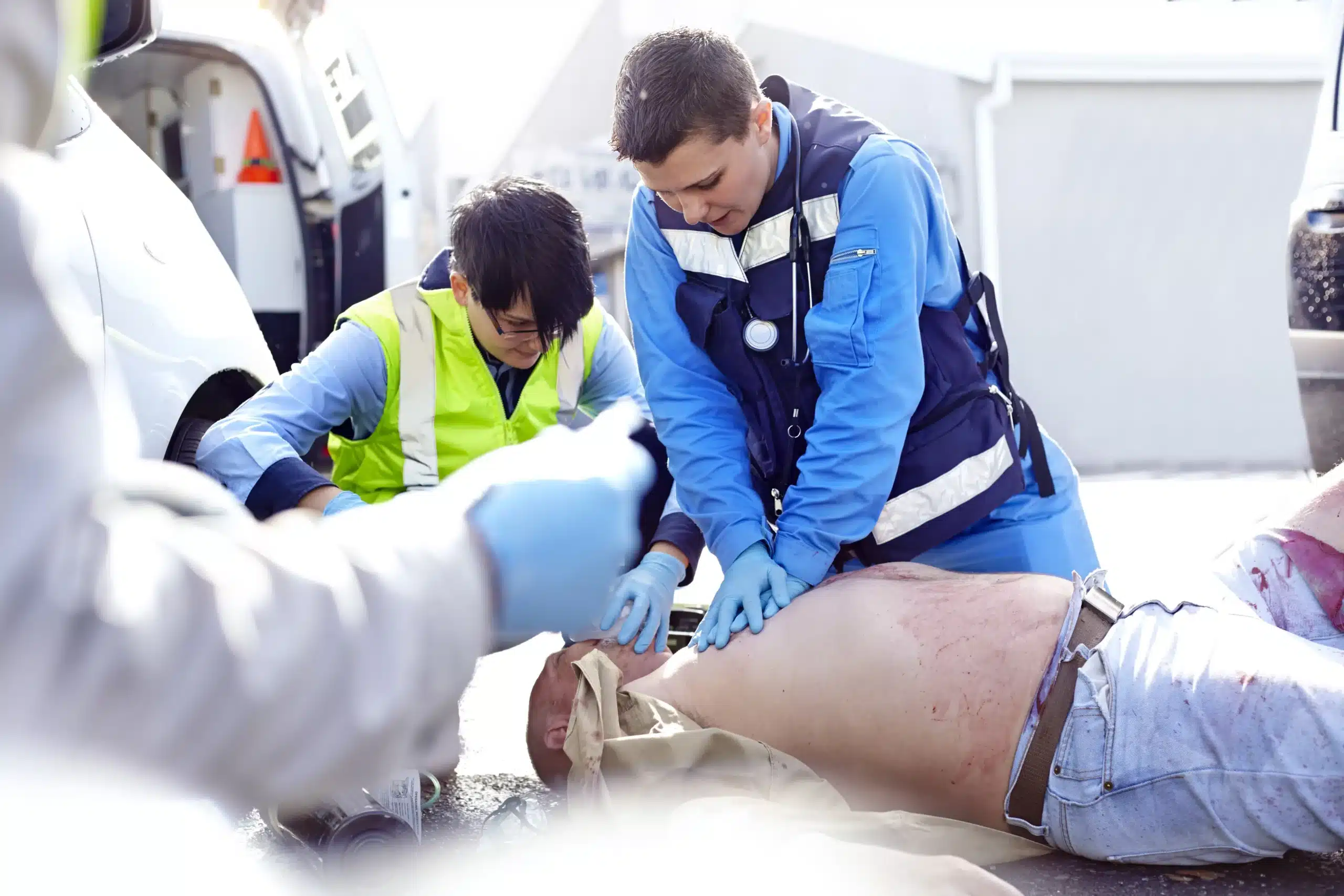Emergencies can happen anytime, anywhere. Would you know what to do if someone near you experienced a sudden cardiac arrest or a serious injury? CPR and first-aid classes in Hayward provide the knowledge and skills to respond effectively in these critical situations. This guide breaks down the essentials of CPR and first aid, explores the different types of training available in Hayward, and helps you find the perfect class to fit your needs and schedule. We’ll also discuss the certification process, what to expect during a class, and why these skills are so valuable, both personally and professionally. Get ready to become empowered and prepared.
Key Takeaways
- CPR and first aid are life skills: Knowing how to respond to emergencies empowers you to assist others in various situations. Find a class that fits your schedule and learning style.
- Choosing the right course matters: Consider your specific needs (professional certification or personal knowledge) and compare course content, format, and pricing. Hayward offers diverse options.
- Certification is simple and beneficial: Select a reputable training provider and remember to renew your certification every two years to maintain your skills and knowledge.
What is CPR and First Aid?
Cardiopulmonary resuscitation (CPR) is a lifesaving technique used when someone’s breathing or heartbeat has stopped. This can happen due to a heart attack, drowning, or other medical emergencies. CPR involves chest compressions and rescue breaths. These actions help circulate blood and oxygen to vital organs until professional medical help arrives. Learning CPR empowers you to take immediate action in a crisis, potentially making all the difference.
First aid encompasses the initial care you give to someone with an illness or injury. It covers a wide range of situations, from treating minor cuts and burns to handling more serious issues like broken bones or allergic reactions. The primary goal of first aid is to stabilize the person and prevent further harm until they can receive professional medical attention. Solid Rock Health offers more information on the importance of first aid and CPR. First aid skills are practical for everyday life, helping you manage unexpected health incidents both big and small. Both CPR and first aid are valuable skills that can help you protect yourself and those around you.
CPR and First Aid Classes: What’s Available?
This section clarifies the different types of CPR and first-aid training available in Hayward. Knowing your options helps you choose the best class for your specific needs.
Basic Life Support (BLS)
Basic Life Support (BLS) certification is crucial for healthcare providers, equipping them with the skills to respond to cardiac arrest and other respiratory emergencies. BLS classes cover essential techniques like CPR, using an AED, and relieving choking. This certification is a prerequisite for many healthcare jobs and ensures you’re prepared to handle emergencies effectively. It’s a smart move for anyone working in healthcare.
Advanced Cardiac Life Support (ACLS)
Advanced Cardiac Life Support (ACLS) training builds upon the foundation of BLS. It’s designed for healthcare professionals who manage cardiopulmonary arrest and other cardiovascular emergencies. ACLS courses cover advanced airway management, pharmacology, and team dynamics during resuscitation. This training is vital for doctors, nurses, paramedics, and other healthcare providers in critical care settings. Think of it as the next level up from BLS.
Pediatric Advanced Life Support (PALS)
Pediatric Advanced Life Support (PALS) focuses on the specialized skills needed to respond to emergencies involving infants and children. This training covers pediatric assessment, airway management, and resuscitation techniques tailored to young patients. PALS certification is essential for pediatricians, pediatric nurses, emergency medical technicians, and anyone working with children in a healthcare setting.
First Aid Training
First aid training provides the skills to manage a wide range of medical emergencies, from minor injuries like cuts and burns to more serious situations like fractures and allergic reactions. These classes teach how to assess injuries, control bleeding, and provide basic wound care. First aid training is beneficial for anyone, regardless of profession, and empowers you to assist others in need. It’s a great skill set to have, both personally and professionally.
AED Training
AED training teaches you how to use an automated external defibrillator (AED) safely and effectively. AEDs are portable devices that can analyze heart rhythms and deliver an electric shock to restore a normal heartbeat during sudden cardiac arrest. This training often incorporates hands-on practice and is frequently included as part of BLS and CPR courses. Learning to use an AED can make a real difference in a life-or-death situation.
Costs, Enrollment, and Scheduling
Getting certified in CPR and first aid is easier than you think. This section breaks down the costs, enrollment process, and flexible scheduling options available for CPR and first aid classes in Hayward.
Pricing and Group Discounts
CPR and first aid training shouldn’t break the bank. Many providers offer competitive pricing, and training with a group can often unlock excellent discounts. Hayward CPR Classes, for example, offers reduced rates for group sessions, making it more affordable to train a team, organization, or even a group of friends.
Signing Up for Classes
Registering for a class is usually straightforward. Most providers have websites where you can browse schedules, choose a class, and register online. Some, like CPR Education, let you arrange training at a convenient location. If you have questions or prefer to register by phone, reach out to the provider directly using their contact information.
Scheduling Options
Balancing work, family, and other commitments can make finding time for training a challenge. Many CPR and first aid class providers in Hayward offer flexible scheduling to accommodate busy lifestyles. Hayward CPR Classes, for instance, holds courses seven days a week, making it easier to find a time that works for you. Whether you prefer a weekday evening or a weekend session, you’ll likely find an option that fits your availability.
What Happens in a CPR/First Aid Class?
Knowing what to expect can help you feel prepared and confident on the day of your training. CPR and first aid classes typically involve a blend of interactive learning, hands-on practice, and assessments to ensure you grasp the techniques effectively.
Hands-On Practice
CPR and first aid courses are designed to be highly interactive. You’ll learn through hands-on practice, using manikins and other training tools to simulate real-life emergency scenarios. This practical approach helps build muscle memory and confidence, so you can react swiftly and efficiently under pressure. This hands-on training empowers students with the skills they need in real emergencies.
Classwork and Practical Assessments
Along with hands-on training, expect classwork covering essential concepts and theory. This often includes videos, presentations, and group discussions to reinforce learning. Practical assessments are also a key component, allowing instructors to evaluate your technique and provide personalized feedback. These assessments usually involve demonstrating CPR and first aid skills on manikins, ensuring you meet the required standards for certification. Many courses combine online learning with in-person practice.
What to Bring
Most CPR and first aid classes don’t require you to bring anything specific. Comfortable clothing is recommended, as you’ll be actively participating in hands-on exercises. Your course provider will supply all the necessary equipment, including manikins, bandages, and other training materials. With readily available CPR and first aid training throughout Hayward, finding a course near you should be easy. If you’re searching for convenient CPR classes, explore the BLS, ACLS, and PALS courses offered in Hayward.
Instructors and Training Formats
Instructor Expertise
In Hayward, CPR and First-Aid classes are led by experienced instructors with strong backgrounds in healthcare and emergency response. This ensures you’re learning practical skills and relevant knowledge you can use in real-life emergencies. Hayward CPR Classes prioritizes instructor expertise, and the quality of instruction is consistently reflected in positive student feedback. Knowing your instructor has a solid foundation in the field can boost your confidence in your training.
In-Person vs. Online Training
Many CPR and First-Aid courses in Hayward offer a blended learning approach, combining online coursework with essential in-person practice. You can usually complete the theoretical parts of the course online at your own pace, then attend a hands-on session to practice skills like chest compressions and rescue breaths using manikins and other training equipment. While online learning offers flexibility, the hands-on component is invaluable for truly mastering CPR techniques and building the confidence to respond effectively in a real emergency. Don’t underestimate the importance of that practical experience. In-person training provides personalized feedback and allows you to ask questions and refine your technique under the guidance of a qualified instructor.
Certification: Process and Renewal
Getting Certified
Getting certified in CPR and first aid is straightforward. Enroll in courses offered by recognized organizations like the American Heart Association (AHA). Hayward CPR Classes provides AHA-certified CPR and first-aid training in Hayward, CA, equipping residents with essential life-saving skills. Their commitment to high-quality training ensures you’ll be well-prepared to respond effectively in emergencies. For healthcare professionals, the American Heart Association’s RQI program offers a streamlined way to maintain your BLS, ACLS, and PALS certifications.
Certification Validity and Renewal
After completing your training, you’ll receive same-day electronic certification, typically valid for two years. This allows you to quickly demonstrate your qualifications. These certifications not only validate your skills but can also boost your resume. To maintain your certification, you’ll need to renew it every two years. This ensures you’re always up-to-date with the latest techniques and guidelines. Contact Hayward CPR Classes to discuss renewal options.
Why Learn CPR and First Aid?
Knowing CPR and first aid can be empowering, providing you with the skills to respond effectively in various situations, from everyday mishaps to life-threatening emergencies. Whether you’re pursuing it for personal or professional reasons, the benefits extend beyond the individual, impacting the community as a whole.
Be Prepared for Emergencies
CPR and first aid are invaluable skills that can truly make a difference in emergencies. Equipping yourself with this knowledge means you’re prepared to assist family, friends, coworkers, or even strangers in critical situations. Think of it as having a readily available toolkit for responding to accidents, injuries, and sudden illnesses. Being trained allows you to stabilize a situation until professional help arrives, potentially saving lives. As By Grace CPR Compliance points out, CPR and first aid training are critical skills that can make a life-or-death difference.
Professional Advantages
In many healthcare settings, having BLS certification is a must. It’s often a prerequisite for jobs in fields like nursing, medicine, physical therapy, and other allied health professions. Even outside of healthcare, CPR and first aid training can enhance your resume, demonstrating your commitment to safety and preparedness. For medical professionals seeking career advancement, the RQI program offers a streamlined path to maintain and update certifications, keeping you current with the latest resuscitation techniques.
Community Impact
Learning CPR and first aid isn’t just about individual preparedness; it contributes to a safer community overall. When more people are equipped to handle emergencies, it creates a network of support that can significantly improve outcomes. This collective preparedness fosters a sense of security and strengthens community bonds. Consider joining a CPR class and become part of this network of lifesavers. You can find more information about our group discounts if you’d like to learn with friends or colleagues. Contact us to learn more.
CPR and First Aid Myths
It’s easy to fall prey to misconceptions about CPR and first aid, especially if your only experience is from TV shows. Let’s clear up some common myths so you can act confidently in a real emergency.
Debunking Myths
One persistent myth is that CPR revives everyone. Sadly, this isn’t true. CPR significantly increases the odds of survival during cardiac arrest by maintaining blood flow to vital organs, but it doesn’t guarantee a person will regain consciousness. Another common misconception is that you have to be certified to perform CPR. This simply isn’t the case; anyone can and should perform CPR in an emergency. Bystander intervention is often the critical link in the chain of survival. Hesitation caused by these myths can have devastating consequences. Understanding the facts empowers individuals to take life-saving action. Richmond Training Concepts addresses these misconceptions and other CPR myths in a helpful article. By Grace CPR Compliance also discusses the importance of debunking these misconceptions to encourage more people to act in emergencies.
Who Can Perform CPR?
Anyone can perform CPR. You don’t need to be a medical professional. In fact, immediate action by anyone on the scene can be the difference between life and death. The American Heart Association (AHA) guidelines highlight the effectiveness of compression-only CPR, simplifying CPR for bystanders. San Francisco CPR classes provides more information on the AHA guidelines. Debunking these myths empowers people to act quickly and effectively when every second counts. Richmond Training Concepts emphasizes that anyone can administer CPR, and immediate action can save a life.
Choosing the Right Class in Hayward
Finding the right CPR and First Aid class in Hayward means considering a few factors. Let’s break down how to choose the best fit for you.
Assess Your Needs
Before you start searching for classes, think about why you need this training. Are you required to have certification for your job, like many healthcare providers or childcare professionals? Or are you a parent, teacher, or simply someone wanting to be prepared for emergencies?
Different professions have different requirements. For example, healthcare workers typically need American Heart Association (AHA) certifications for BLS, ACLS, or PALS. If you’re looking for a general CPR and First Aid course for personal knowledge, a broader certification might be suitable. Knowing your “why” helps narrow your options. Many providers offer CPR certification for businesses, organizations, and individuals, so you can find a class structure that works for you. You can even find convenient options for CPR and first aid training, including renewal certifications, arranged near you.
Compare Courses
Once you know what type of certification you need, it’s time to compare courses. Hayward has several providers offering various certifications, from AHA-certified courses to those offered by the American Red Cross and other organizations. Look at what each course covers. Some might focus more on adult CPR, while others include infant and child CPR. CPR Training Center offers a good example of the range of courses available.
Also, consider the format. Do you prefer in-person, hands-on learning, or would an online component work for you? Think about your learning style and what helps you absorb information best. Finally, check if the provider offers group discounts, especially if you’re coordinating training for a workplace or group of friends. Some providers, like Safety Training Seminars, even offer on-site training, bringing the class to your location. This can be a huge benefit for larger groups.
Top CPR/First Aid Providers in Hayward
Finding the right CPR and first-aid training is crucial. Here’s a rundown of reputable providers in Hayward:
Hayward CPR Classes
Hayward CPR Classes offers American Heart Association BLS, ACLS, PALS, and CPR classes in Hayward. They are known for their daily classes, convenient location, and competitive pricing. If you’re searching for a “CPR class near me,” this is a great place to start. They also offer discounts for group CPR training.
American Red Cross
The American Red Cross is a nationally recognized provider of CPR and first-aid certification courses. Check their website for class schedules and locations in Hayward.
Safety Training Seminars
Safety Training Seminars is another option for AHA-certified courses. As a woman-owned business, they offer BLS, ACLS, PALS, CPR, and first-aid training in Hayward.
CPR Education
CPR Education focuses on providing CPR and first-aid training in Hayward and the surrounding areas. They aim to equip residents with the skills to respond effectively to emergencies. Visit their website for details.
Local Hospitals and Medical Centers
Hospitals and medical centers in Hayward often offer CPR and first-aid classes. Contact your local hospitals directly to inquire about courses and schedules.
Community Colleges and Adult Education Programs
Check with local community colleges and adult education programs. These institutions may offer CPR and first-aid courses as part of their curriculum or continuing education programs.
Related Articles
- Find CPR Courses Near Me: Your Local Guide – Hayward CPR Classes
- Importance of Workplace CPR and First-Aid Training
- Why CPR is Crucial in Healthcare – CPR and First-Aid Training
- CPR Myths Busted What Everyone Should Know
- CPR Training in Hayward: Your Guide – Hayward CPR Classes
Frequently Asked Questions
What’s the difference between BLS and ACLS certification? BLS (Basic Life Support) certification covers the fundamentals of CPR, AED use, and choking relief. It’s essential for anyone in healthcare. ACLS (Advanced Cardiac Life Support) certification builds on BLS, delving into advanced techniques for managing cardiovascular emergencies, including pharmacology and team dynamics. It’s geared towards healthcare professionals working in critical care settings.
How do I choose the right CPR and first aid class for me? First, determine why you need the training. Are you fulfilling a job requirement or seeking personal knowledge? This helps you identify the right certification level. Next, compare course content, format (online vs. in-person), and cost. Consider your learning style and schedule when making your decision.
How long are CPR and first aid certifications valid, and how do I renew them? Certifications are typically valid for two years. Renewal involves retaking the course to refresh your skills and stay updated on the latest guidelines. Contact your certifying organization or training provider for renewal options. Many providers offer streamlined renewal courses.
What if I’m nervous about performing CPR in a real emergency? It’s completely normal to feel apprehensive. High-quality CPR classes emphasize hands-on practice, building muscle memory and confidence. Remember, any attempt at CPR is better than none. Focus on the basics—chest compressions and calling for help—and trust your training.
Are online CPR and first aid certifications accepted? While online courses offer flexibility for learning the theoretical aspects, hands-on practice is crucial for mastering CPR. Look for blended learning options that combine online coursework with in-person skills sessions and assessments to ensure you’re fully prepared. Many employers and certifying organizations require this practical component.
